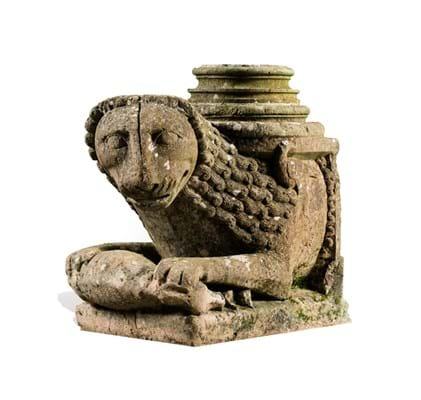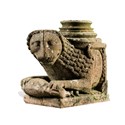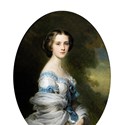
When wealthy banking brothers Ulrich and Jacob Fugger of Augsburg decided in 1509 to erect a chapel in memory of their brother George, they commissioned the sculptor Hans Daucher (1486-1538) to create the decoration for what was to be the first example of Italianate Renaissance architecture in Germany.
The limestone putti, measuring 11.5in (29cm) and 10.5 (27cm), originally formed part of the balustrade, surrounded by other angels that are now in the Maximilianmuseum in Augsburg.
In the early 19th century much of the interior decoration of the chapel was dismantled and it is thought that at this point the putti appeared on the market and were acquired by Baron Arthur de Schickler from the Berlin banking dynasty.
He had moved to France and in 1867 had acquired and remodelled a château at Martinvast near Cherbourg and decided to fill it with a collection of sculpture, tapestries and works of art from the 16th and 17th centuries along with family portraits.
Auction record
Conserved in the chateau by subsequent generations of the Schickler-Pourtalès family, the putti and other elements of the collection were offered for sale in a 201-lot auction held by Sotheby’s on May 16.
The angels were purchased by the German dealer Galerie Neuse and the price is a new auction high for a work by Daucher.
More than 500 bidders from 34 countries contested the pieces offered at the auction which raised a hammer total of over €5.6m.
While the putti were expected to make a six-figure sum (the estimate was €1m-1.5m), a number of other items in the top 10 list made sums that were well in excess of their estimates.
These included the final lot of the auction, a pair of Verona marble figures of stylobate lions catalogued as probably 13th century from Emilia, northern Italy, and acquired before 1893 in Italy by Arthur de Schickler which realised €240,000 (£210,525) against a €15,000-25,000 guide.
Another high flyer was a mounted display of arms and armour that realised €340,000 (£298,245) where €14,000-15,000 had been predicted, selling to an American bidder. The pieces were mostly Oriental and dated to the 18th and 19th centuries but a saleroom notice had identified two of the helmets as a south German etched parade burgonet in the Turkish taste from c.1560, probably Nuremberg.
Among the family portraits included in the sale was Franz-Xaver Winterhalter’s 1805-1873) portrait of Melanie de Bussière Comtesse Edmond de Pourtalès, a prominent Second Empire socialite mentioned by Marcel Proust in À la Recherche du Temps Perdu.
Traditionally held to have been painted in 1857 when she was just 17, it realised €600,000 (£526,315), selling to a descendant of the Comtesse. It was the most expensive portrait in the collection.
£1 = €1.14









